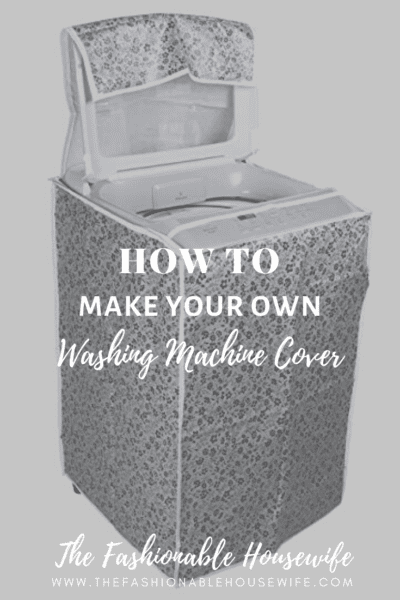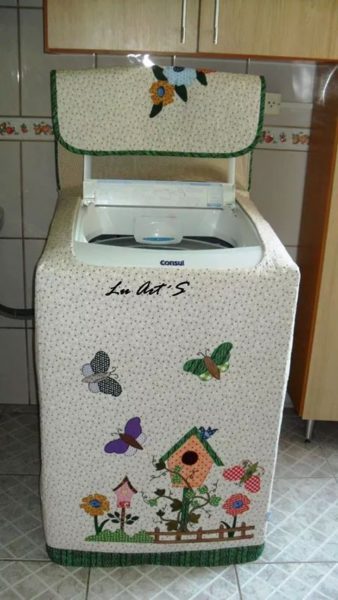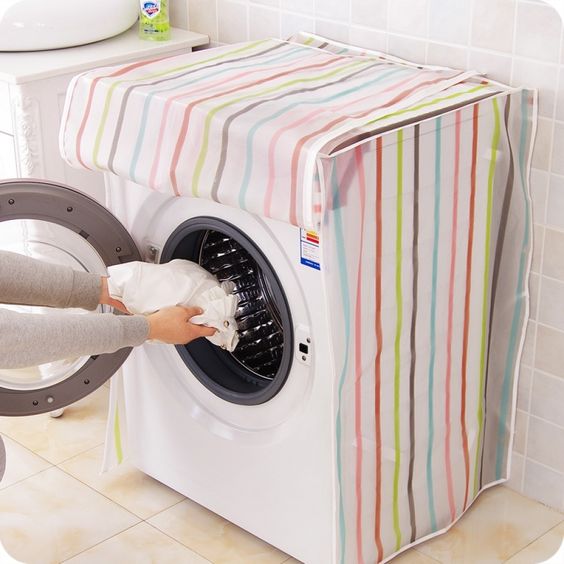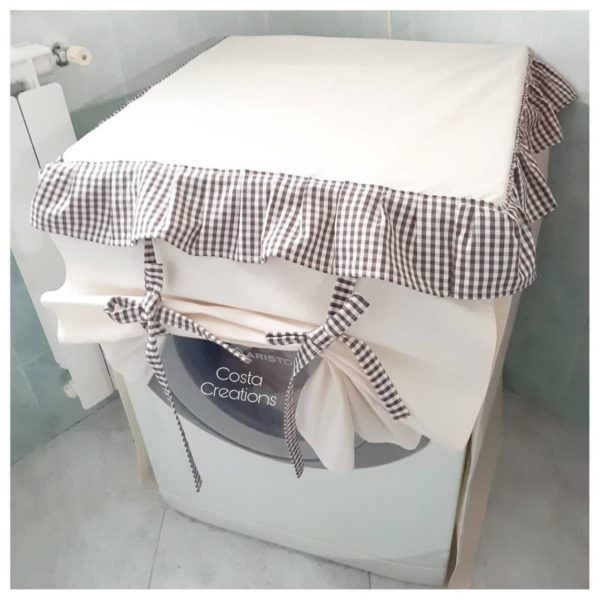
Rural inhabitants understand how quickly dust can accumulate indoors, but even urban dwellers fight the dust build-up and the allergy issues that may arise due to the mites and pollen it brings. It also always seems to get into small cracks and crevices that are impossible to clean, no matter how often you wipe down surfaces.
Luckily, you can quickly solve the worst of your dust issues pertaining to appliances with the use of a fitted cover. Just like many people cover their toasters, microwaves, and other kitchen appliances, you can apply this practice to larger pieces as well- such as your washing machine. Learn why you might consider such a choice, and how to make your own washing machine cover below.
Benefits of a Washer Cover
Most people use their washer and dryers at a minimum once a week- more If they have children. These are appliances that provide dependable service and their care and maintenance should be a priority in order to avoid any breakdowns. An abundance of dust and dirt can easily get into the working mechanisms, and covers can help reduce this exposure since it serves as a protective layer.
It also helps absorb excess moisture from humidity in your climate, as well as from your washer and dryer. Moisture can get into the motor as well, but a washing machine cover helps keep this from happening.
There are a few situations when a cover works best with your washer, such as when you have it placed side by side with a dryer to avoid dusty lint buildup; when you have it near a cooking area to avoid the oils, heat, and moisture in the air; and when it is in an area of direct sunlight to help it avoid color fading.
How to Make Your Own Washing Machine Cover

Since you definitely want to keep your machine running as it should, you may want to consider making your own cover. You don’t need a lot of skill with sewing, but should know the basics of sewing a seam and measuring to a pattern. The following guide makes this a simple, easy task to complete:
What You Need:
You don’t need a whole lot to make your own washing machine cover. The most difficult part may be choosing your favorite material! This is an inexpensive way to protect your sewing machine to extend its life and protect its surface from dust, fading, and moisture. As far as quick projects go, this is a fairly simple design and goes fast overall.
- Fabric or Vinyl – Fabric material truly is best for this although it may take a bit more time. You can choose a vinyl material as well, but it will not last as long as a more durable weave.
- Sewing Machine – Although you can always sew by hand, a good sewing machine will make this a fast project. You don’t need an expensive machine either for a job well done. Read here about which machines might be best!
- Scissors – Sharp sewing scissors are a must! (And NEVER use your fabric scissors for anything else!)
- Measuring Tape – A fabric measuring tape is also an absolute must for an accurate measure.

Step One: Pick your Material
As mentioned, a good fabric material truly is the best to use for a washing machine cover. It will last much longer than a vinyl option and the biggest issue it may give you is finding the pattern you prefer.
Step Two: Measure Your Machine
Make sure you take accurate measurement of your machine dimensions. Take care to include the measurements of the access door and control panel soyu can incorporate that into your cover design.
Step Three: Choose Your Pattern
You can always make your own pattern for a washing machine cover, or pick and choose from free online choices. These also provide inspiration for measuring and sewing techniques from those who have already had success in the creation of one.
Step Four: Measure and Cut Fabric
Again, be sure to measure well before cutting, in fact, it is best to use the old adage, measure twice, cut once in order to ensure an accurate cut.
Step Five: Sew and Use
To finish it up, just follow your pattern and sew where needed! Then get it fitted onto your machine and enjoy!

Conclusion
A washing machine cover is well worth the time it takes to make (which isn’t much at all). It is an inexpensive project and can help extend the life, and look, of your current washing machine. All you need is a dependable sewing machine, some scissors, and a measuring tape to get started. A good pattern is also a choice you may want if you don’t want to make your own, and many good ones exist online.



